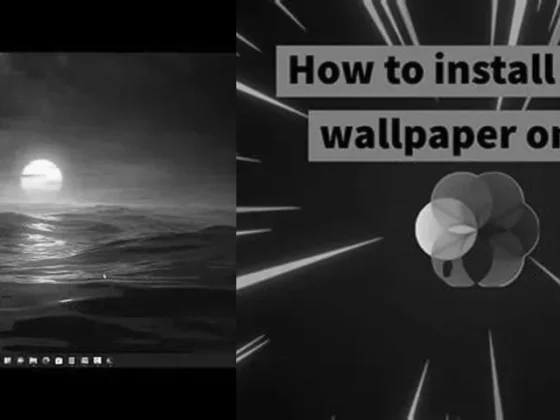How Do You Fix A Dead Pixel Or Stuck Pixel: Are you tired of staring at that annoying dead pixel or stuck pixel on your screen? Don’t worry, we’ve got you covered! In this blog post, we’ll dive into the world of pixel problems and show you how to fix them like a pro. Whether you’re dealing with a dead pixel on your Android phone or a stuck pixel on your computer monitor, we’ve got the solutions you need. From third-party tools to manual techniques, we’ll explore all the options to get your pixels back in action. So, let’s roll up our sleeves and bring those pixels back to life!
Understanding Dead and Stuck Pixels
Before diving into the solutions for dead or stuck pixels, it’s crucial to differentiate between the two. A dead pixel is one that does not light up at all, appearing as a constant black dot on your screen. In contrast, a stuck pixel is one that remains a certain color—red, green, or blue—or shows a combination of these colors and does not change when the pixels around it do.
Third-Party Tools to the Rescue
UDPixel (Windows)
For Windows users, UDPixel is a popular choice when it comes to fixing stuck pixels. This software works by flashing a series of colors, urging the pixel to function normally. To use UDPixel, download and install the application, pinpoint the problematic pixel, and then let the software run its cycle.
LCD (Online)
If you’re hesitant to download software, LCD is an online tool that serves a similar purpose. It’s a convenient option for those who prefer not to install additional software on their devices. Simply navigate to the website, follow the instructions to target the affected pixel, and the tool will begin flashing colors.
Manual Techniques for Pixel Problems
Using a Damp Cloth
A damp cloth can be used to fix a stuck pixel. With the screen turned on, gently rub the area where the stuck pixel is located. Be cautious not to apply too much pressure, as this might cause more harm than good.
The Rubber Eraser Method
Another manual approach is to use a soft, pointy object like a rubber eraser. With the display off, lightly press on the stuck pixel with the eraser. This method can sometimes redistribute the liquid in the LCD to unstick the pixel.
Pixel-Fixing Software
Pixel-fixing software operates under the premise that rapid color changes can jolt the pixel back into normal behavior. This method flashes the screen with different colors, potentially unsticking the pixel. Such software can often be run for several hours to ensure effectiveness.
The Manual Pressure Method
Another manual fix involves using gentle pressure. First, turn off your screen to avoid causing any additional issues. With a stylus or similar object, apply slight pressure to the stuck pixel, then remove the pressure and turn the screen back on. If the pixel was stuck due to a misalignment, this method might resolve the issue.
Fixing Dead Pixels on Android Phones
For Android phone users experiencing dead pixels, a similar approach can be taken. Using a blunt, narrow object like a stylus or the cap of a pen, apply gentle pressure to the dead pixel, which can sometimes bring it back to life. However, be extra careful with the delicate screens of smartphones.
Cost Considerations for Professional Repairs
If you’re not comfortable attempting to fix dead or stuck pixels yourself, professional repairs are an option. The cost can vary widely, from $70 to $400, depending on the device and the service provider. Typically, having the manufacturer handle the repair is the most expensive route.
Actionable Tips for Pixel Problems
Steps to Use UDPixel:
- Download and install UDPixel on your Windows device.
- Locate the stuck pixel on your screen.
- Run the software and set it to cycle through various colors for an extended period.
How to Utilize LCD Online:
- Visit the LCD website on any device with internet access.
- Follow the on-screen instructions to begin the flashing color sequence.
- Place the flashing window over the stuck pixel and let it run.
Applying the Manual Pressure Technique:
- Turn off your device’s display to protect it.
- Using a stylus, apply gentle pressure directly on the stuck pixel.
- Release the pressure and turn the display back on to check if the issue is resolved.
When to Seek Professional Help:
- If multiple attempts with the above methods fail.
- If the screen has a significant number of dead or stuck pixels.
- When you’re not comfortable applying pressure or using software on your device.
Preventive Measures and Final Thoughts
Preventing dead or stuck pixels is challenging, as they often result from manufacturing defects or natural wear and tear. However, keeping your screen clean, avoiding physical impacts, and not leaving static images on the screen for extended periods can mitigate risks. Remember, while the methods described above are effective in many cases, they do not guarantee a fix for every dead or stuck pixel. If you’re in doubt or the problem persists, consult with a professional technician to avoid further damage to your screen.
FAQ & Related Questions about How Do You Fix A Dead Pixel Or Stuck Pixel?
Q: How do you fix a dead pixel or stuck pixel?
A: To fix a stuck or dead-looking pixel, you can use third-party tools like UDPixel or LCD to flash the pixel with multiple colors. Alternatively, you can try manually rubbing the stuck pixel with a damp cloth or a soft, pointy item like a rubber eraser.
Q: Can a stuck pixel be fixed?
A: Yes, a stuck pixel can sometimes be fixed. Using pixel-fixing software that rapidly flashes colors in the affected area may help unstick the pixel. Additionally, manually applying pressure to the stuck pixel with a stylus or similar object while the display is turned off could potentially fix it.
Q: Is a stuck pixel a big deal?
A: Having a hot, stuck, or dead pixel in your LCD screen is quite common in most consumer-level displays and monitors. If your device is still under warranty, it’s best to get it exchanged. Otherwise, you can determine the type of pixel problem you have and explore the available solutions.
Q: How do I restart a stuck pixel?
A: To restart a stuck pixel, you can try pressing, long-pressing, and pressing again on the affected area. This method is known as recovery and factory reset. However, keep in mind that this may not always work and using pixel-fixing software or manual rubbing methods might be more effective.


